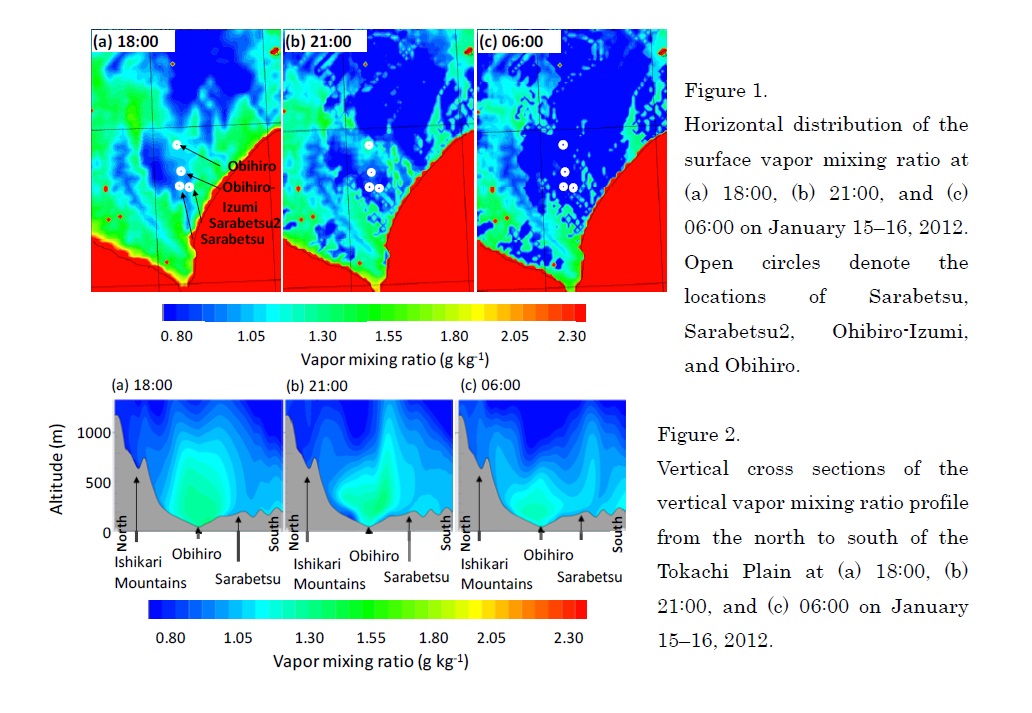Graphical Abstract
Fukushima, H., T. Yazaki, T. Hirota, Y. Iwata, A. Wajima, and A. Yokota, 2019: Factors and mechanisms affecting the air temperature distribution on a clear winter night in a snow-covered mesoscale plain. J. Meteor. Soc. Japan, 97, 105-121.
https://doi.org/10.2151/jmsj.2019-005
Graphical Abstract
Plain Language Summary: To clarify how the low temperatures in winter nights form, we analyzed the effects of topography and boundary-layer wind on the temperature distribution and vertical profiles of boundary-layer atmospheric conditions of the Tokachi region for a winter night using numerical simulations. From the distribution of vapor mixing ratio, we revealed unique processes of the development of surface temperature distribution influenced by inversion layer formation and katabatic drainage flow (Figures 1 and 2).
Highlights:
- The effects of boundary-layer wind on the formation of high-temperature zones were generally confined to the northwestern part of the Tokachi Plain.
- Radiative cooling and sensible heat transfer by turbulent mixing in the surface layer do not adequately explain the temporal change in observed surface air temperatures.
- The development of inversion layer and katabatic drainage flow drastically change the temperature from southern Sarabetsu to Obihiro, despite of a moderately strong wind condition in the boundary layer.







